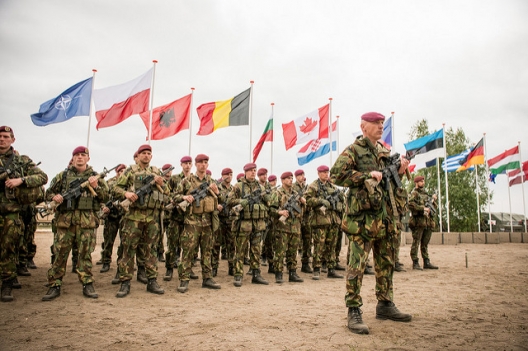 Debates about NATO’s role and burden-sharing have been around since its founding. GOP presidential candidate Donald Trump’s sharp criticisms of the Western Alliance are just the latest flare-up. But NATO endures because it is more than a simple coalition. It is a marriage built on the strongest of foundations: common values, a shared world-view and solidarity.
Debates about NATO’s role and burden-sharing have been around since its founding. GOP presidential candidate Donald Trump’s sharp criticisms of the Western Alliance are just the latest flare-up. But NATO endures because it is more than a simple coalition. It is a marriage built on the strongest of foundations: common values, a shared world-view and solidarity.
Fifteen years ago, the Allies demonstrated that solidarity by invoking Article 5 of the Washington Treaty for the first time in history in response to 9/11. Estonian troops fought alongside their American comrades in one of the most dangerous parts of Afghanistan for 10 years, enduring the second-highest rate of casualties per capita in the Afghanistan coalition. We did this because our duty to protect the security of each and every Ally is without conditions. Article 5 is crystal clear: An attack against one is an attack against all.
Today, NATO faces a resurgent Russia. Moscow continues to illegally occupy and destabilize parts of Ukraine, with July being the bloodiest month of 2016. The Kremlin’s military buildup along NATO’s borders—including Estonia’s—is accompanied by nuclear saber-rattling. While NATO is basing battalions in its frontline states, including Estonia, Russia is building new brigades and divisions while claiming it has withdrawn its troops 930 miles from the Finnish border. Recently, the cyberattacks on the Democratic National Committee in the U.S. reminded us of how Moscow attempts to influence elections in sovereign countries, even in America….
For NATO to remain the strongest and most successful alliance in history, the security of any Ally should never be seen simply as a question of the fate of that country but as a question of upholding an international order where the rights of nations cannot simply be subjugated by force. Only a strong and unified NATO can achieve that, and NATO is only strong and unified if each and every Ally’s commitment to collective defense is ironclad.
Mr. Hanso is the defense minister of Estonia.
Image: NATO VJTF exercise, June 18, 2015 (photo: Erik Morren/German-Netherlands Corps)
